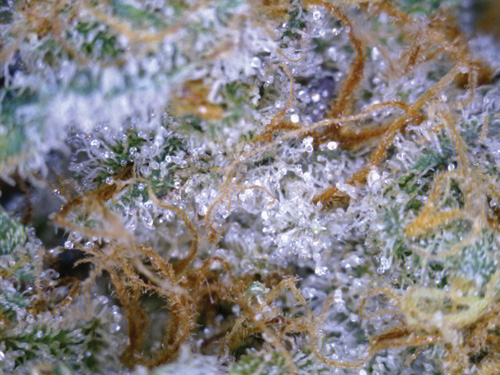HERBWISE High Times senior cultivation editor Danny Danko remembers how a photo from the early 1990s changed his life. It was “Field of Dreams” by Andre Grossmann, an aerial view of a corn field south of the Mason-Dixon line that had 300 marijuana plants growing in its midst.
“This was before the days of these massive open air gardens,” Danko told the Guardian in a recent phone interview. “It definitely is one of those images that is worth a thousand words. It shows you the possibilities are endless when it comes to growing.”
Danko handles High Times’ marijuana growing section, and writes the magazine’s annual top 10 strains list, covering events like Amsterdam’s Cannabis Cup. His work gives him the opportunity to sample the kindest bud photos from around the world. He brings his own images when the shoot is, as he calls it, “sensitive. Sometimes people don’t want anyone besides me to come to their space.”
“The fact is, you can grow it on your windowsill.” Danko says part of High Times’ mission is encouraging the home gardener to produce weed for their community, “to make [cannabis] something people grow in their garden and share with their friends.”
Potography is big business these days. Search the Internet and you’ll see shots of strains so high def that the trichomes (THC crystal formations) resemble glowing deep sea bottom feeders. 3D imaging yields 360 degree views of your prospective nug.
Danko says that the importance of weed photography can’t be overestimated. “We publish photography of things you don’t get to see,” he says. “Plants growing in their natural habitat; mythical, clandestine spaces. We’re the National Geographic of pot,” he pauses. “Or maybe the Playboy.”
In the Bay, local businesses are discovering ways to harness the power of nug porn. Vapor Room dispensary staff member Ryno Barela shoots daily specials and recent arrivals in a small studio in the back of the dispensary. He posts his images on the Vapor Room’s social networking sites, making daily updates to the dispensary’s iPhone-Droid application, which is a guide to current inventory for patients.
“Once we started doing it, we realized how powerful the photography of cannabis is,” he said in a recent phone interview with the Guardian. “You put a picture of something that looks amazing and within an hour, five people come through that ‘saw it on Facebook.’”
But it’s not just about activating salivary glands. “It’s beautiful and you can fantasize about smoking it,” says Barela. “But a trained eye can tell a lot.” The trichome structure and coloration, he says, give away lots of information about bud types.
But he’s not going for centerfold gloss. “We really focus on what it looks like in actuality so that it looks the same when you come into the shop.” Like “Field of Dreams,” he’s showing smokers the scope of the burgeoning world of cannabis – only his shots are live action reports of what’s on offer around the corner.

